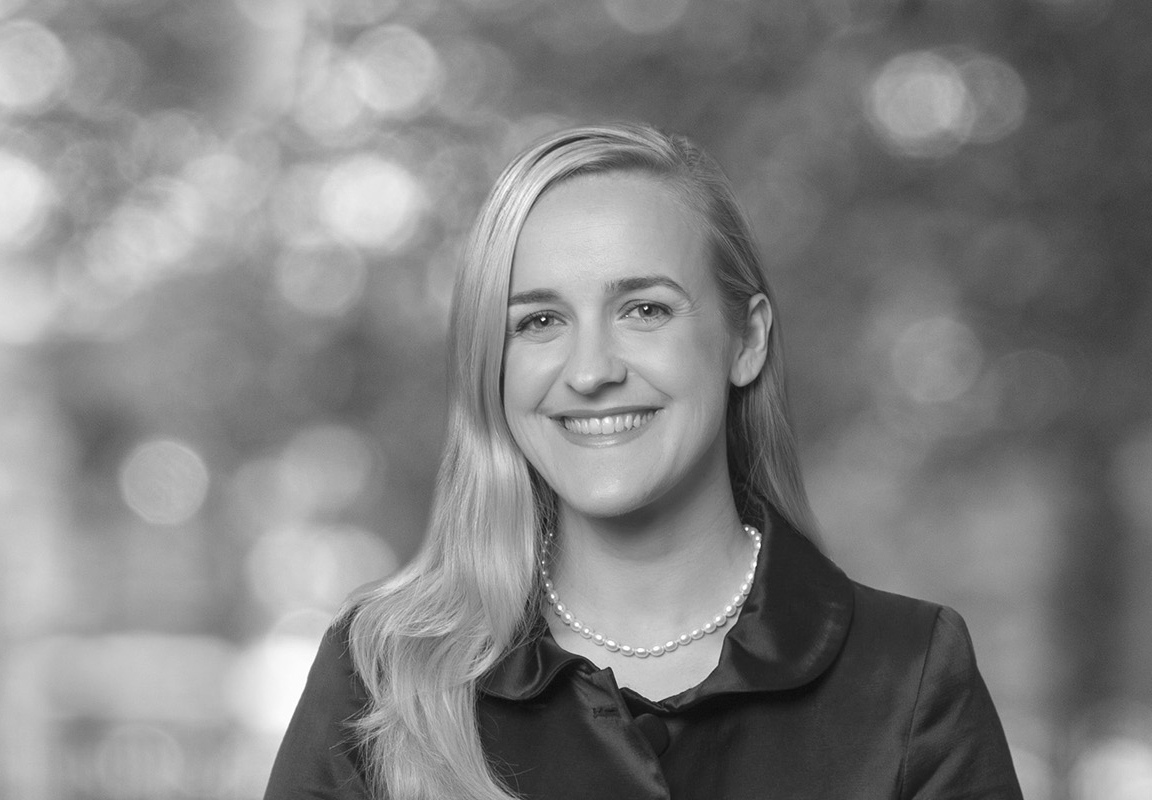
Key points
- Term SOFR is eligible for use in general business loans (in contrast to the much narrower use cases for £ Term SONIA or any €STR1 -based forward-looking term rate). However, the use case for Term SOFR in the derivatives market is (deliberately) very narrow.
- On hedged Term SOFR transactions, market participants must take particular care over the mismatch between LMA Exposure Draft and ISDA Supplement # 84 basis "temporary" and "permanent" fallbacks.
- The EMEA loan market needs to come to a consensus on "temporary fallbacks". We expect market practice to diverge from those set out in the LMA Term SOFR Exposure Draft.
- Use of Term SOFR in cash products should be considered in light of the availability and pricing of related Term SOFR derivatives relative to the deeper liquidity in SOFR compounded in arrears derivatives.
The hard deadline for stopping new use of USD LIBOR following 31 December 2021 is rapidly approaching. Latest market practice as at end November 2021 suggests that some loan market participants are (at last) now contracting new business on a day 1 SOFR basis. We look at: early stage market practice in Term SOFR transactions in the US syndicated leveraged loan market; and at "concept"/Exposure draft documentation on both sides of the Atlantic, and consider some key issues associated with Term SOFR based lending under English law loan documentation.
The importance of the ARRC's 29 July 2021 formal recommendation of Term SOFR
In a year with many IBOR milestones, the formal recommendation by the New York Federal Reserve's Alternate Reference Rates Committee (the "ARRC") on 29 July 2021 of CME Group's Term SOFR rates was among the most momentous. The delay2 in the ability of the ARRC to recommend a forward-looking SOFR term rate threatened to impact USD transition more generally. The availability of an officially endorsed Term SOFR rate was particularly important to the US syndicated business loan market, since: that market was holding out for a term rate; and (in the context of legacy contract transition) a Term SOFR rate "selected or recommended by the Relevant Governmental Body" is the first step in the ARRC's hardwired fallback waterfall (and the reference rate in New York state and draft federal "tough legacy" legislation). At the same time, given the hard deadline of no new USD LIBOR referencing contracts after 31 December 2021,3 the availability of Term SOFR going into Q4 was critical for many other global cash market participants and/or products4 for whom "in arrears" (and other) SOFR rates present adoption challenges.
What is the nature of the rate?
CME Term SOFR rates are forward-looking interest rate estimates of overnight SOFR for reference periods starting T+25 from the date of publication, calculated and published for one-month, three-month, six-month and (since 21 September 2021) 12-month tenors.6 The benchmark methodology7 includes the use of CME SOFR Futures derivatives products, which compound and annualise the daily overnight SOFR rate on the basis of an Actual/3608 day count convention over the applicable reference period.
Term SOFR, like other RFR term rates, therefore reflects market expectations (implied from the SOFR-linked derivatives markets underlying its construction) on the future movement in the (overnight) SOFR rate over a (future) reference period. Like RFRs (and other RFR term rates), in contrast to LIBOR, it does not contain any credit sensitivity component or term liquidity premium.
Loans: use cases / scope of use
A key distinction between £ and USD loan market products lies in the eligibility of Term SOFR for mainstream business loans. Use cases for Term SONIA are narrow and are largely limited to "niche"10 specialist products and markets. UK regulators have emphasised11 the importance of using "the most robust alternative reference rate to LIBOR appropriate for the applicable use case. In sterling this will often be SONIA compounded in arrears[…]". In contrast, the ARRC's scope of use is broad and its best practice recommendations (and subsequent FAQs) confirmed its support for the "use of SOFR Term Rate in addition to other forms of SOFR for business loan activity". UK market participants have since been able to take comfort from the £ RFR WG's September 2021 minutes,12 which confirmed the application of the ARRC's guidance to, and therefore the wider scope of use for, USD loan exposures.
Use in Loans: Pros and Cons
We continue to expect significant uptake of Term SOFR in the loan and other cash markets, especially where (over and above product-specific considerations) "payment certainty", fx conversion concerns and/or the use of an observable pricing source are major considerations. We refer to our 8 June 2021 client alert for some of the pros and cons associated with its use.
Loans: commercial, operational and English law (LMA) based documentation issues
The LMA Term SOFR Exposure Draft13 was published to illustrate and facilitate development by market participants of possible English law loan documentation approaches to Term SOFR loans. In the absence of wider loan market trends in this area, we comment here on how the LMA Term SOFR Exposure Draft addresses certain key documentation issues.
Credit adjustment spread ("CAS"): Since Term SOFR is derived from overnight RFRs, on an IBOR transition financing, a credit adjustment spread would generally apply to neutralise any pricing differential to USD LIBOR.14 The approach to CAS with respect to Term SOFR should, in principle, be no different to that for SOFR compounded in arrears. Day 1 Term SOFR (or day 1 RFR) loans might or might not use a CAS (if no CAS, the expectation would be that the Margin would be increased). While the approach of the US loan market and the EMEA loan market have their differences, market participants may be interested in initial market practice to the approach to CAS in the early day 1 Term SOFR transactions in the US syndicated leveraged loan market. As at late November 2021, we have observed a range of approaches to pricing structures in that market, including:
- a standalone, negotiated CAS (on a per tenor basis (e.g ., one/three/six month));
- "flat" CAS (i.e ., same for all tenors), sometimes with controls on the ability of the Borrower(s) to select interest period duration;
- varied pricing construction (CAS presented separately vs embedded in the margin).
Zero floors: In legacy LIBOR-basis LMA loan documentation, a zero floor applies to LIBOR. The LMA Exposure Draft applies to day 1 Term SOFR transactions the same approach as it applies to day 1 RFR transactions and applies the zero floor to Term SOFR (rather than the economically equivalent position of the sum of Term SOFR plus CAS). Borrowers will challenge this approach - whether the floating rate is Term SOFR or RFR based.
Licensing: Any institution that uses CME Term SOFR Reference Rates as a data input or reference in valuation, pricing, transactional or benchmarking activities, is required to obtain a CME Group licence15 for use of the rate. Licensing for cash market financial products is available at no cost up to the end of 2026. A market participant that uses Term SOFR in both cash market and derivative market products (e.g., hedging a Term SOFR referencing loan) would require a licence in both cash market and OTC Derivative product categories.16 However, a market participant does not, solely as a result of being a borrower or other obligor under a Term SOFR referencing loan, require a licence for that purpose.17
Temporary fallbacks:18 The ARRC's 21 July 2021 Term SOFR conventions (and the LSTA's Term SOFR "concept document") provide for a "last published" fallback. This means that the rate applied is the Term SOFR rate for the applicable tenor most recently published by CME Group as the administrator subject to that being not more than three US Government Securities Business Days prior to the date as of which the fallback applies. ISDA's Supplement #84 to the 2006 ISDA Definitions19 also provides for an equivalent fallback but without a limit on the "last published" date. In contrast, the LMA Term SOFR Exposure Draft adopts an entirely different waterfall. Therefore, on any transaction based on the LMA Term SOFR Exposure Draft based documentation that also involves related hedging of the Term SOFR exposure, basis risk between the temporary fallbacks in the loan and those in the related derivative will be an important area for focus.
The first step in the waterfall ("Interpolated Term SOFR") is linear interpolation. This will be familiar to market participants from legacy LIBOR transactions, although (where the reference period is less than one month) a key operational change is the need to interpolate between overnight SOFR (as administered and published by the NY Fed) and the one-month CME Group Term SOFR rate.
The remainder of the LMA Term SOFR Exposure Draft waterfall ("Shortened Interest Period" => "Shortened Interest Period and Historic Term SOFR" => "Shortened Interest Period and Interpolated Historic Term SOFR") has its origins in an optional waterfall for which there was no (or very little) market practice on legacy LIBOR transactions, since on almost all legacy transactions, the market used instead a shorter, alternative waterfall20 ("Interpolated Screen Rate" => "[Reference Bank Rate:] / [Cost of funds:]" => "Cost of funds"). The waterfall in the LMA Term SOFR Exposure Draft, while presented as only "illustrative drafting" given "the lack of established market practice and consensus" to the issue of short-term unavailability of a Term SOFR rate, is very unlikely to reflect anticipated market practice: it diverges from the approach in the US loan market and the Term SOFR derivatives market; it was rarely, if ever, applied on legacy LIBOR transactions; and elements of it (for example "Shortened Interest Period") perpetuate some of the (broken) assumptions behind legacy documentation relating to notional match funding by lenders in the interbank market.
In our view (and based on our experience to date of structuring new Term SOFR loan transactions), appropriate temporary fallbacks to the Term SOFR component21 of the floating rate, might include, in addition to linear interpolation and "last published", the following:
- "last reset"- i.e., Term SOFR as fixed for the immediately preceding interest period;
- "last recent"- i.e., Term SOFR as fixed for a recent reference period shorter than that of the relevant interest period;
- a rate derived from the sum of the Central Bank Rate plus Central Bank Rate Adjustment: this corresponds to the fallback (same day or "last published") to the "Daily Rate" (i.e., overnight SOFR) for USD in the LMA's recommended forms of documentation that reference RFRs; this might therefore require a compounding methodology to be applied into the fallback.
We note that all of these are referred to in the Commentary to the LMA Term SOFR Exposure Draft as possible fallbacks to consider in the event of a permanent cessation (as opposed to temporary unavailability) of Term SOFR.
Rate setting/Quotation Day and utilisation timeline: as in the ARRC's 21 July 2021 Term SOFR conventions (and the LSTA's Term SOFR "concept document"), this remains substantially as per historic LIBOR conventions, with rate fixing U-2; and Utilisation Request deliverable U-3.
Notional interbank match funding "architecture": although, as with RFR-based documentation, there is no assumption that a lender would be match funding (on a Term SOFR basis) its participation in a Term SOFR referencing loan facility, the LMA Term SOFR Exposure Draft retains as "optional provisions" the full suite (default interest period duration; Break Costs; prepayment notice periods; market disruption; cost of funds) of documentary provisions that, in legacy LIBOR basis loan documentation, correspond to this no longer applicable assumption.
Permanent fallbacks and future proofing: the LMA Term SOFR Exposure Draft contains an "amendment approach" clause22 that aligns substantially to that contained in its recommended form of Rate Switch documentation (although no "pre-cessation trigger"23 is included). Again, this differs from the approach under ISDA documentation and is a basis risk issue to consider.
Term SOFR alongside RFRs: multi-currency deals will often include USD; we anticipate that market documentation may need to contemplate the possibility of a multicurrency facility agreement that uses (or, if signed before year end 2021, rate switches to) Term SOFR (rather than SOFR compounded in arrears) for USD loans. In these circumstances, there may be an apparent discrepancy (bearing in mind the different scope of use for RFR term rates in £ vs USD) between the rationale for a term rate for USD when a compounded in arrears rate is applied to £. However, the EMEA market already operates loan documentation that contemplates "in arrears" RFRs for other currencies alongside EURIBOR as a term rate for EUR loan exposures.
12-month setting: the 12-month setting of CME Term SOFR has not yet been officially endorsed by the ARRC. This means that this setting, although capable of being applied in new contracts, would not be eligible for application in either:
- hardwired fallback provisions based on the ARRC's recommended form; or
- US (New York or (once enacted) US federal) "tough legacy" legislation in the US.
Hedging: use cases / scope of use
Consistent with the ARRC's key principles for Term SOFR,24 the ARRC's 21 July 2021 best practice recommendations and 27 August 2021 FAQs have made clear that the use of Term SOFR derivatives be limited to end-user facing derivatives that hedge Term SOFR-linked cash products (e.g., business loans that use Term SOFR as a benchmark). The rationale for such usage includes the fact that the derivatives market already references SOFR compounded in arrears by way of ISDA's Supplement #70 (IBOR Fallbacks Supplement) to the 2006 ISDA Definitions25 and the underlying SOFR derivatives market which is required for the calculation of Term SOFR itself would be undermined by material trading in Term SOFR derivatives.
Hedging: end users and implications for dealers
Under the ARRC's best practice recommendations for Term SOFR derivatives, an end user could be either a borrower or lender who has entered into a Term SOFR business loan or other cash product referencing this rate. However, the dealer counterparty to these hedges would not be considered an end user for these purposes. The dealer could instead "warehouse" the risk, including dynamically hedging its own exposure using derivatives linked to forms of overnight SOFR. The ARRC is of the view that the basis risk between overnight SOFR derivatives and Term SOFR derivatives will be small and manageable. Based on the October 2021 ISDA-Clarus RFR Adoption Indicator, levels of SOFR derivatives remain at 15.8 per cent. of all measured USD interest rate derivatives. It remains to be seen whether liquidity in SOFR derivatives will increase sufficiently to facilitate this dynamic hedging and thereby reduce basis risk between the two rates and also bring down pricing.
Hedging: selection of Term SOFR more generally
In any event and more generally, any consideration of the usage of Term SOFR in cash products should always take into account the availability and pricing of related Term SOFR derivatives as compared to the currently more liquid SOFR compounded in arrears derivatives.
*This article is to be published in the January 2022 edition of Butterworths Journal of International Banking & Financial Law (JIBFL).
1 Although, as noted in our 8 June 2021 client alert, the May 2021 recommendations of the Working Group on Euro Risk-Free Rates (the "€ RFR WG") on EURIBOR fallback triggers and €STR-based EURIBOR fallback rates contemplate the use of any €STR forward-looking term rate in corporate lending products to corporates who "require the rate at the start of the interest period" (surprisingly, but presumably this is aimed at EUR denominated loans to SMEs).
2 The milestone for this in the ARRC's Paced Transition Plan was 30 June 2021.
3 See, for example, US supervisory guidance (30 November 2020 / 20 October 2021) or the FCA's 16 November 2021 prohibition on new use.
4 See our 8 June 2021 client alert.
5 In this context, relevant business days are US Government Securities business days (corresponding to those for which the Federal Reserve Bank of New York (the "NY Fed") calculates and publishes (overnight) SOFR).
6 See CME Group's 12 October 2021 CME Term SOFR Reference Rates FAQs.
7 See CME Group's CME Term SOFR Reference Rates Benchmark Methodology.
8 Therefore corresponding to the loan market convention for USD.
9 See our 8 June 2021 client alert for a summary of the products and markets for which use cases for Term SONIA reference rates were recognised by the Working Group on Sterling Risk-Free Reference Rates (the "£ RFR WG") in its January 2020 paper.
10 See Chapter 3 of the FCA's November 2021 Feedback Statement FS21/11.
11 See the 26 March 2021 "Dear CEO" letter from the FCA and PRA.
12 See paragraph 2b.
13 Published 27 October 2021.
14 Since RFRs do not contain a credit sensitivity component or term liquidity premium.
15 See CME Group's 12 October 2021 CME Term SOFR Reference Rates FAQs; FAQs 8 and 9. Similar licensing requirements were applicable to Ice Benchmark Administration (IBA) LIBOR.
16 See also the LSTA website for more information about CME Term SOFR licensing issues.
17 See CME Group's 12 October 2021 CME Term SOFR Reference Rates FAQs; FAQ 14.
18 By this, we refer to the "waterfall" of solutions to determining the floating rate for a reference period where the rate cannot be determined by reference to the published rate (for legacy LIBOR transactions using LMA documentation, this would have been the "Screen Rate"). In the LMA Term SOFR Exposure Draft, these provisions are set out at clause 10.1 (Unavailability of Term SOFR).
19 Published and effective 8 September 2021.
20 We agree that (other than interpolation) the elements of this waterfall (commonly used on legacy LIBOR transactions) would not be appropriate in a temporary fallback waterfall for Term SOFR.
21 CAS is a relevant consideration in the context of temporary fallbacks also.
22 Clause 34.4 (Change to reference rates).
23 i.e., the benchmark administrator or its supervisory making a statement of future non-representativeness with a view to engaging contractual fallback triggers.
24 Key principle (2) stated that any recommended rate should "Be rooted in a robust and sustainable base of derivatives transactions over time".
25 Published and effective 25 January 2021.
26 ISDA-Clarus RFR Adoption Indicator
White & Case means the international legal practice comprising White & Case LLP, a New York State registered limited liability partnership, White & Case LLP, a limited liability partnership incorporated under English law and all other affiliated partnerships, companies and entities.
This article is prepared for the general information of interested persons. It is not, and does not attempt to be, comprehensive in nature. Due to the general nature of its content, it should not be regarded as legal advice.
© 2021 White & Case LLP





